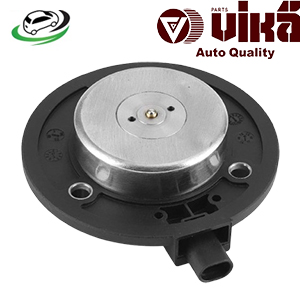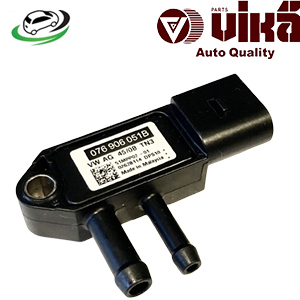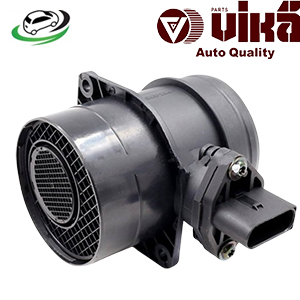-7%
Get AUDI A3/A4/A6-Diesel / VW Golf Mk IV/ Passat B6/B7/ Beetle 5C7/5C8/ Mass Air Flow Meter Sensor 074906461B
The air flow meter sensor, also known as the mass air flow (MAF) sensor, plays a pivotal role in the efficient functioning of modern internal combustion engines. It is a key component in the engine’s air-fuel mixture system, ensuring that the engine receives the correct amount of air for optimal combustion. This sensor is particularly important in vehicles equipped with electronic fuel injection (EFI) systems, as it provides the engine control unit (ECU) with real-time data about the air entering the engine. With this information, the ECU adjusts fuel delivery to optimize performance, fuel efficiency, and reduce emissions.
In this detailed guide, we’ll explore the functions of the air flow meter sensor, how it works, its benefits, common issues, and maintenance tips to keep it functioning at peak performance.
1. What is an Air Flow Meter Sensor?
The air flow meter sensor, commonly referred to as the MAF sensor, is an electronic device that measures the amount of air flowing into the engine’s intake manifold. The data from the sensor is sent to the vehicle’s ECU, which adjusts the fuel injection rate accordingly. It’s crucial for ensuring the proper air-fuel ratio, which directly impacts engine performance, fuel economy, and emission control.
There are two primary types of air flow meter sensors:
- Hot Wire MAF Sensors: These are the most common type used in modern vehicles. A hot wire sensor measures airflow by monitoring the current required to keep a wire at a constant temperature as air passes over it.
- Vane Airflow Sensors: This older style uses a mechanical flap or vane to measure the volume of air entering the engine.
2. How Does an Air Flow Meter Sensor Work?
The air flow meter sensor operates by monitoring the amount of air entering the engine in real time. This allows the engine to adjust the fuel injection accordingly. Here’s a step-by-step breakdown of how the sensor functions:
a. Measurement of Air Intake
The sensor is typically located between the air filter and the throttle body. As air flows into the engine, it passes through the sensor. In the case of a hot wire MAF sensor, the air cools down a heated wire or film. The sensor then calculates the amount of air based on how much electricity is required to keep the wire at a constant temperature.
b. Sending Data to the ECU
Once the air intake is measured, the sensor sends this data to the ECU, which uses it in combination with other data, such as engine speed, throttle position, and temperature, to calculate the correct fuel injection amount.
c. Adjusting the Air-Fuel Ratio
With the information from the air flow sensor, the ECU adjusts the air-fuel ratio for optimal combustion. If the air intake increases (e.g., when the throttle is opened wider), the ECU will increase the fuel injection to maintain the correct ratio. Conversely, if the airflow decreases, the ECU reduces fuel injection.
3. Importance of the Air Flow Meter Sensor
The MAF sensor is a critical component that directly influences engine performance. Without accurate airflow data, the ECU cannot correctly adjust fuel delivery, which can lead to poor performance and inefficiency. Some key roles the MAF sensor plays include:
a. Ensures Optimal Air-Fuel Ratio
Maintaining the correct air-fuel ratio is essential for efficient combustion. A lean mixture (too much air) can cause misfires and loss of power, while a rich mixture (too much fuel) can lead to poor fuel economy and increased emissions.
b. Improves Fuel Efficiency
By accurately measuring air intake, the MAF sensor helps the engine burn fuel more efficiently. This reduces fuel consumption and lowers overall running costs, especially during highway driving or when the engine is under load.
c. Enhances Engine Performance
A functioning MAF sensor ensures the engine operates smoothly by providing the right amount of fuel under different conditions. Whether accelerating, idling, or cruising, the sensor helps the engine deliver consistent power and responsiveness.
d. Reduces Emissions
Proper air-fuel management is essential for reducing harmful emissions like carbon monoxide, hydrocarbons, and nitrogen oxides. By optimizing combustion, the MAF sensor ensures cleaner exhaust gases, helping vehicles comply with emission regulations.
4. Common Symptoms of a Faulty Air Flow Meter Sensor
When the air flow meter sensor begins to fail, it can cause a variety of engine-related issues. Some of the most common symptoms include:
a. Check Engine Light
A failing MAF sensor is likely to trigger the check engine light. This is because the sensor may send incorrect data to the ECU, causing the engine to operate outside of its normal parameters. Running a diagnostic test will usually reveal fault codes related to the air-fuel mixture or airflow problems.
b. Poor Fuel Economy
If the MAF sensor is providing inaccurate readings, the ECU may send too much or too little fuel to the engine. In most cases, a failing sensor will cause the engine to run rich, meaning more fuel is consumed than necessary.
c. Rough Idling and Stalling
A bad MAF sensor can cause the engine to idle roughly or even stall. This happens when the ECU is unable to properly adjust the air-fuel mixture, leading to inconsistent engine performance, especially at low speeds.
d. Hesitation or Jerking During Acceleration
If the sensor is not measuring air intake accurately, the engine may hesitate, jerk, or experience a loss of power when accelerating. This is because the ECU isn’t supplying the correct amount of fuel to match the increased airflow.
e. Engine Misfires
Inaccurate airflow data can result in the wrong air-fuel mixture, which may cause the engine to misfire, particularly under load or during rapid acceleration.
5. Benefits of a Properly Functioning Air Flow Meter Sensor
a. Optimized Performance
A healthy MAF sensor ensures that your engine operates at peak efficiency, delivering smooth acceleration and consistent power. Whether in stop-and-go traffic or during high-speed cruising, your vehicle will respond more predictably.
b. Better Fuel Efficiency
Accurate measurement of air intake means that the ECU can deliver the exact amount of fuel needed, minimizing waste and maximizing fuel economy.
c. Extended Engine Life
A properly functioning MAF sensor ensures that the engine is not overworked or running inefficiently. This reduces wear and tear on components like the pistons, cylinders, and valves, prolonging the engine’s lifespan.
d. Compliance with Emission Standards
Maintaining a proper air-fuel mixture reduces harmful emissions, helping vehicles meet stringent environmental regulations and pass emission tests.
6. Maintenance Tips for the Air Flow Meter Sensor
Although the MAF sensor is a durable component, it requires periodic maintenance to ensure optimal performance. Follow these maintenance tips to keep your air flow meter sensor in top shape:
a. Regular Cleaning
Over time, the MAF sensor can become dirty or contaminated by debris, oil, and dust from the air intake system. Cleaning the sensor regularly with a specialized MAF cleaner can help prevent performance issues. Make sure to use a non-abrasive cleaner, as damaging the sensor’s delicate elements can lead to malfunction.
b. Check Air Filters
A dirty or clogged air filter can allow debris to pass through the intake and contaminate the MAF sensor. Regularly inspecting and replacing the air filter can prevent this and ensure clean airflow into the engine.
c. Inspect Electrical Connections
Ensure that the sensor’s wiring harness is free from corrosion or loose connections. Poor electrical connections can cause inaccurate readings or sensor failure.
d. Monitor Engine Performance
Pay attention to any signs of a failing MAF sensor, such as poor fuel economy or rough idling. Address these issues promptly to avoid further engine damage.
e. Replace When Necessary
Although the MAF sensor is a long-lasting component, it may eventually wear out. If cleaning and troubleshooting don’t resolve performance issues, replacing the sensor may be the best option to restore engine performance.
7. Troubleshooting Common Air Flow Meter Sensor Issues
a. Erratic Readings
If the MAF sensor provides inconsistent data, this may be due to contamination or wiring issues. Cleaning the sensor or repairing faulty connections should resolve the problem.
b. Reduced Sensitivity
Over time, the sensor may lose its ability to accurately measure airflow. Regular cleaning can restore some sensitivity, but if the sensor is too worn, it may need to be replaced.
c. Check for Vacuum Leaks
Vacuum leaks in the intake system can disrupt the MAF sensor’s readings. Inspect the intake hoses and connections for any leaks or damage, as these can affect airflow measurement.
Conclusion
The air flow meter sensor is a critical component in ensuring that your engine receives the correct air-fuel mixture for optimal performance. By maintaining a functioning MAF sensor, you can improve fuel efficiency, reduce emissions, and prolong the life of your engine. Regular cleaning, inspecting connections, and replacing the sensor when necessary are key steps in maintaining the health of your vehicle’s air intake system. Understanding the role of the MAF sensor and addressing any issues early can help prevent more severe engine problems and costly repairs down the road.
Follow us on Facebook for more parts.




Reviews
Clear filtersThere are no reviews yet.